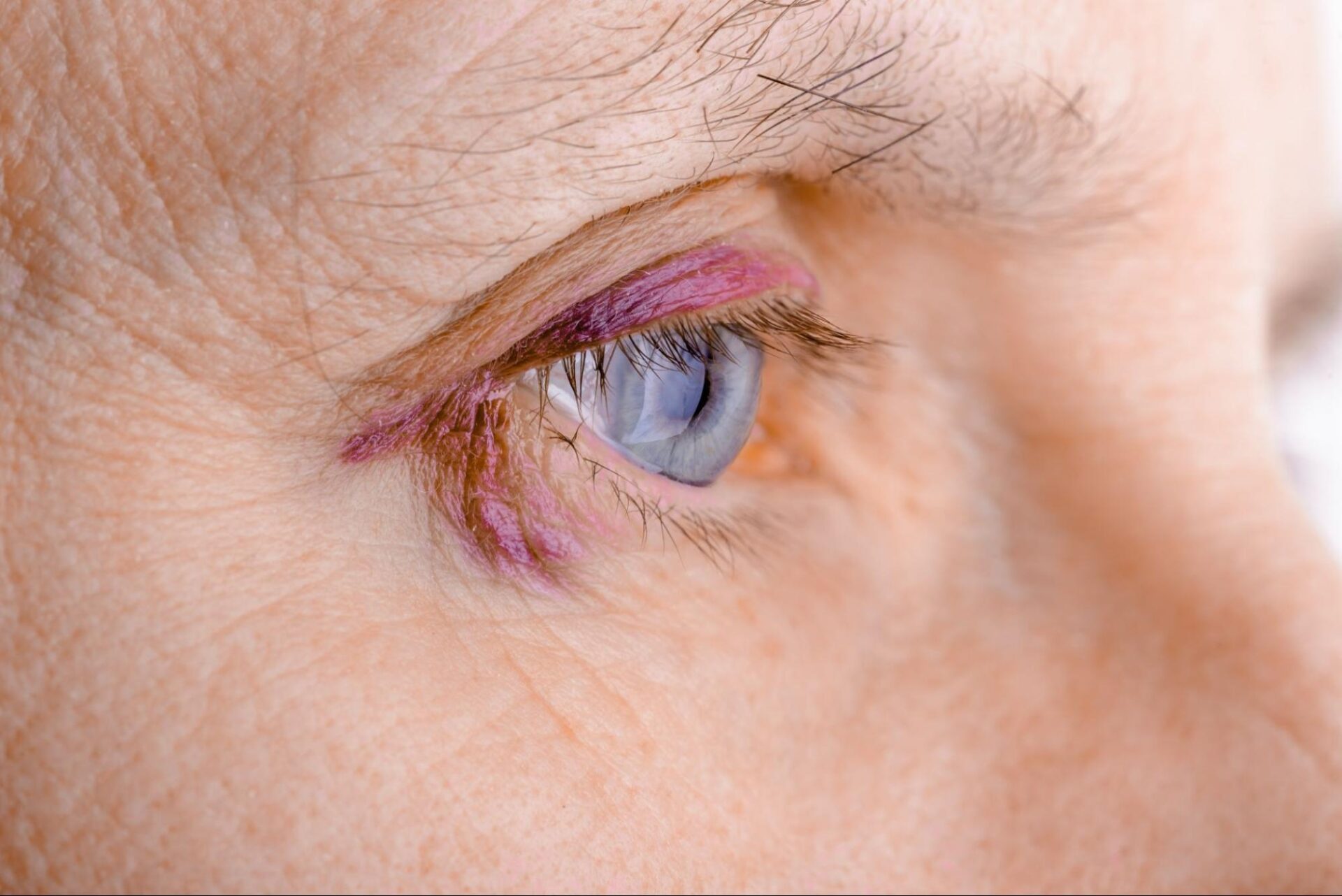
Eye Injury Types Explained: From Trauma to Treatment Strategies
-
Eye Health
From corneal abrasions to chemical burns, this guide explains the most common types of eye injury types and how they’re treated.
Eye injuries are a common reason for emergency eye care and can affect patients of all ages. Injuries range from minor eye injuries, such as small scratches and irritations, to serious trauma that threatens long-term vision.
Recognizing types of eye injuries, and knowing when to seek medical care, can help patients prevent complications and protect their eyesight.
What is an eye injury?
An eye injury is any damage to the eye or the structures around it, including the eyelid, eye socket, or surrounding tissues. These injuries can occur suddenly and vary widely in severity.
Some are caused by everyday accidents, such as getting poked in the eye or having a small object lodged under the eyelid. Others result from more serious events, including sports collisions, falls, chemical exposure, or sharp trauma.
While some injuries may heal quickly with minimal care, others can lead to infection, scarring, or permanent vision loss if not treated promptly.
Eye injury symptoms to watch for
Some eye injuries cause immediate pain or vision changes, while others may not be noticeable right away. Recognizing the early warning signs can help prevent complications and protect the eye from long-term damage.
Patients should seek medical care if they experience any of the following symptoms after an injury:
Redness or swelling
Eye pain or soreness
Tearing or discharge
Blurry or double vision
Light sensitivity
A gritty or foreign body sensation
Blood in or around the eye
Difficulty opening the eye
Sudden loss of vision
Visible damage to the eye or eyelid
Even if symptoms seem minor, it’s important to seek medical attention right away to avoid potential complications. Some serious conditions may not cause immediate discomfort but can progress quickly without treatment.
Common eye injury types
Eye injuries can range from mild irritation to serious trauma. Below are some of the most common types, along with how they present and how they’re typically treated.
Corneal abrasion
A scratch on the clear, protective surface of the eye (the cornea), usually caused by a fingernail, contact lens, or small object like paper or sand.
Patients with this type of injury may experience symptoms such as redness, sharp pain, tearing, sensitivity to light, and a sensation of something in the eye.
Most corneal abrasions heal within a few days. Doctors often prescribe antibiotic eye drops to prevent infection and lubricating drops to ease discomfort. Contact lenses should be avoided during healing. Patients who wear contact lenses are at increased risk for corneal abrasions if lenses are worn too long or handled improperly.
Foreign object in the eye
A small particle, often like dust, sand, or metal, gets trapped on the eye’s surface or under the eyelid.
Symptoms can include a gritty or burning sensation, watering, redness, and difficulty keeping the eye open. If blinking or rinsing with sterile solution doesn’t remove the object, a doctor can safely extract it.
Antibiotic drops may be prescribed to prevent infection, and follow-up care ensures the cornea isn’t scratched.
Blunt trauma
A direct hit to the eye or surrounding area, such as from a ball, elbow, or fall. This can bruise the eye or damage internal structures.

Blunt trauma can cause a range of symptoms. Some of the most common include pain, swelling, bruising, blurry vision, floaters, or even vision loss. In some cases, internal bleeding or retinal detachment may occur.
Mild cases may require only cold compresses and observation. More serious injuries may need imaging, medication to reduce swelling, or surgery, especially if there is internal bleeding or structural damage.
Penetrating or perforating injuries
An object pierces the surface of the eye, potentially causing deep internal damage.
Symptoms may include severe pain, tearing, blood in the eye, blurry or lost vision, and in some cases, visible damage to the eye.
Immediate eye protection and emergency surgery are often needed. Antibiotics are used to prevent infection, and long-term follow-up is required to monitor healing and vision.
Globe injuries
These injuries affect the eyeball itself and are classified as either closed globe injuries (no outer wall break) or open globe injuries (full-thickness rupture).
Symptoms may include vision loss, pain, bleeding, or a misshapen eye. Because globe injuries can threaten permanent vision loss, patients should avoid direct pressure and seek medical attention immediately. Most cases require evaluation in the emergency room and urgent medical treatment.
Chemical burns
Exposure to harmful substances, often cleaning agents or industrial chemicals, causes damage to the eye’s surface and internal tissues.
Symptoms can include burning, redness, pain, blurred vision, watering, and swelling.
Immediate and thorough rinsing of the eye is essential, ideally for at least 15 minutes. Follow-up treatment may include antibiotic or steroid drops and ongoing care to assess for long-term damage or scarring.
Radiation or light-related injuries (photokeratitis)
Overexposure to ultraviolet (UV) light, such as from the sun or welding equipment, can damage the cornea’s surface. Sometimes called “welder’s flash” or “snow blindness.”
Common symptoms are pain, redness, light sensitivity, tearing, and the sensation of sand in the eye. Symptoms usually appear several hours after exposure.
Photokeratitis typically resolves within 24–48 hours. Doctors may recommend lubricating drops, cold compresses, and sunglasses. Resting the eyes and avoiding further UV exposure also helps promote healing.
How eye injuries are diagnosed
To evaluate an eye injury, an eye doctor will perform a thorough exam using specialized tools and techniques. During the exam, the eye doctor will carefully assess the injured eye to avoid worsening any internal damage.
The goal is to assess the extent of the damage and identify any issues that may not be visible on the surface.
Common steps in the diagnostic process include:
Visual acuity test: Measures how well the patient can see at different distances.
Slit lamp exam: A microscope with a bright light used to closely examine the front of the eye, including the cornea, iris, and lens.
Fluorescein dye test: A special dye is applied to the eye to highlight scratches or foreign objects.
Eye pressure check: Elevated or reduced pressure may indicate internal injury.
Imaging tests (CT scan or X-ray): Used if the doctor suspects a fracture or a foreign object inside the eye socket.
Early diagnosis is critical. This is true especially for injuries that may not cause immediate pain or vision changes. A prompt and accurate evaluation helps guide the most effective treatment plan.
How to protect the eyes from injury
Many eye injuries are preventable with a few simple precautions. Whether at work, playing sports, or doing tasks around the house, protecting the eyes can significantly reduce the risk of trauma.
Here are some ways patients can help safeguard their vision:
Wear protective eyewear during activities that pose a risk, such as home improvement projects, lawn care, or using power tools.
Use safety goggles in workplaces with flying debris, chemicals, or machinery.
Wear sports goggles for high-risk sports like racquetball, basketball, or hockey.
Be cautious with chemicals, including cleaning products. Always read labels and avoid splashing.
Supervise children around sharp objects or projectiles like toys, sticks, or fireworks.
Avoid rubbing the eyes if a foreign object is present, as this can worsen the injury.
Use caution with contact lenses, and follow proper hygiene and wear instructions.
Protective steps like these are often easy to implement and go a long way in preventing serious, sometimes irreversible, eye damage.
When to Seek Emergency Eye Care
Some eye injuries require immediate medical attention and may warrant a trip to the emergency room to prevent more permanent vision loss, especially when symptoms are sudden or severe.
If a patient experiences any of the following after an injury, urgent evaluation by an eye care specialist is essential:
Sudden loss of vision
Blood in or around the eye
Sharp object penetration
Severe eye pain or swelling
Visible damage to the eye
Trouble moving the eye or keeping it open
Exposure to chemicals or foreign objects that don’t wash out
Blurry vision, flashes of light, or floaters after trauma
Even if symptoms seem mild, it’s important not to wait. Delaying care can result in permanent vision loss, especially in cases of serious eye injuries like retinal detachment or globe rupture. Prompt diagnosis and treatment can help prevent complications and preserve long-term vision.

If you’re in the greater Los Angeles area and have sustained an eye injury, contact Dr. Besser’s office to schedule a consultation.
Related articles

Globe Injury Iris Prolapse Management
Discover how eye trauma can lead to iris prolapse, what symptoms to watch for, and how globe injuries are diagnosed and treated.
-
Eye Health

Emergency Eye Care: When You Should See Your Doctor ASAP
In this article, you'll learn what's considered an eye emergency, where to receive medical attention, and what to do in the most common scenarios faced by patients.
-
Eye Health

Eye Injury Prevention While Playing Sports
Safely enjoy your favorite sports and outdoor activities by learning these eye injury prevention tips.
-
Eye Health
